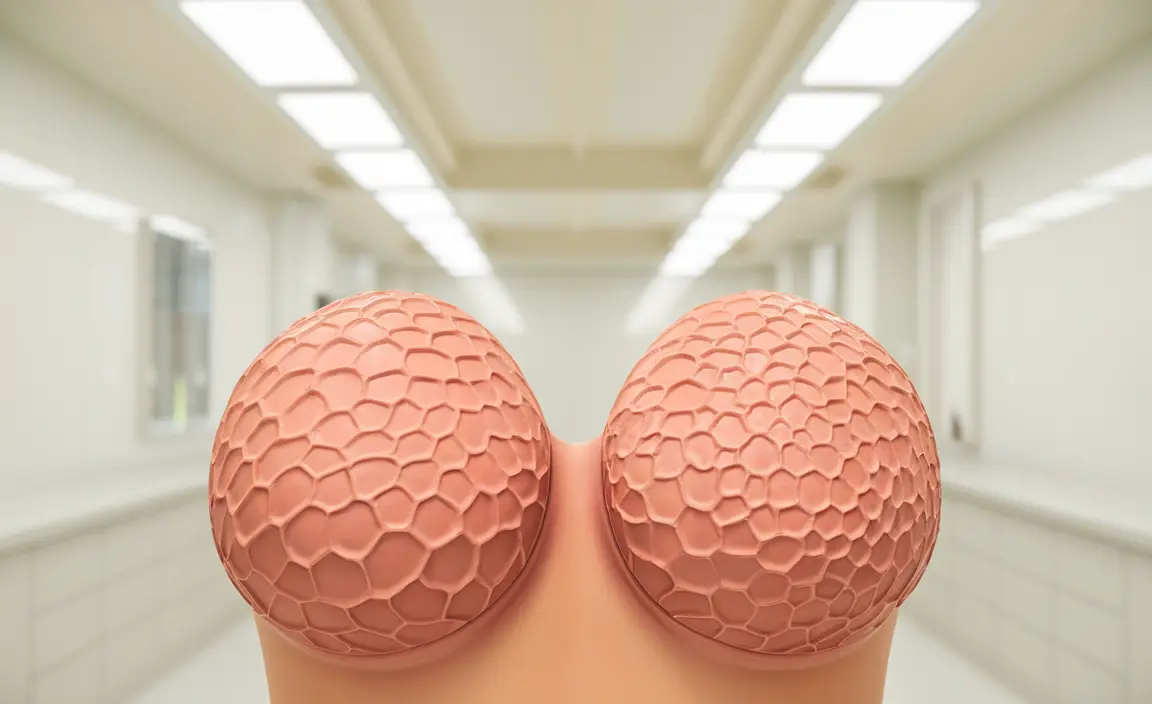Dimpling of breast skin is a notable change in breast appearance that can cause concern for many individuals. This distinctive texture change, sometimes described as resembling an orange peel, may indicate various underlying conditions ranging from benign changes to more serious health concerns. Understanding what causes breast dimpling and recognizing when to seek medical attention is crucial for maintaining breast health.
This comprehensive guide will explore the various aspects of breast skin dimpling, including its causes, diagnosis, and available treatments. We'll help you understand when these changes might require immediate medical attention and what to expect during the evaluation process.
Understanding Breast Skin Dimpling
Breast skin dimpling appears as small indentations or puckering on the breast surface. This texture change can occur in one specific area or affect a larger portion of the breast. The appearance may become more noticeable when raising your arms or changing positions.
Common Characteristics of Breast Dimpling
The visual signs of breast dimpling typically include:
- Puckering or indentation of the skin
- Orange peel-like texture (peau d'orange)
- Uneven or irregular breast surface
- Changes that become more apparent with movement
- Possible accompanying symptoms like redness or swelling
Causes of Breast Skin Changes
Several conditions can lead to dimpling of breast skin, ranging from normal tissue changes to more serious conditions requiring medical attention.
Non-Cancerous Causes
Common benign conditions that may cause breast dimpling include:
- Fat necrosis from previous injury or surgery
- Mammary duct ectasia
- Normal aging changes
- Post-surgical scarring
- Fibrocystic breast changes
Potential Serious Causes
More serious conditions that may present with breast dimpling include:
- Inflammatory breast cancer
- Other forms of breast cancer
- Mastitis with advanced inflammation
- Certain autoimmune conditions affecting breast tissue
Diagnostic Process
When breast dimpling is detected, healthcare providers typically follow a comprehensive diagnostic approach that may include:
- Clinical breast examination
- Mammogram or 3D mammography
- Ultrasound imaging
- MRI in specific cases
- Possible biopsy if suspicious areas are identified
Treatment Options
Treatment for breast skin dimpling varies depending on the underlying cause:
Non-Cancerous Conditions
For benign causes, treatment might involve:
- Monitoring and regular check-ups
- Antibiotics for infectious causes
- Anti-inflammatory medications
- Supportive care measures
Cancer-Related Treatment
If cancer is diagnosed, treatment may include:
- Surgery (lumpectomy or mastectomy)
- Radiation therapy
- Chemotherapy
- Targeted biological therapies
- Hormone therapy when applicable
Frequently Asked Questions
What causes dimpling of breast skin and how can I tell if it is serious? Breast skin dimpling can be caused by various conditions, from benign tissue changes to breast cancer. It's considered serious if accompanied by other symptoms like persistent pain, nipple changes, or breast lumps. Any new dimpling should be evaluated by a healthcare provider.
What does dimpling or orange peel texture on my breast indicate about my breast health? An orange peel texture (peau d'orange) can indicate inflammation, infection, or potentially inflammatory breast cancer. This texture change occurs when fluid builds up in breast tissue, causing the skin's appearance to change.
How is inflammatory breast cancer diagnosed when breast skin shows dimpling or swelling? Diagnosis typically involves a combination of physical examination, imaging tests (mammogram, ultrasound, and possibly MRI), and tissue biopsy. Healthcare providers will also consider other symptoms and how quickly changes developed.
What treatments are available for breast skin dimpling caused by cancer or benign conditions? Treatment depends on the underlying cause. Benign conditions may require monitoring or antibiotics, while cancer treatments can include surgery, radiation, chemotherapy, and other targeted therapies.
When should I see a doctor about new or persistent dimpling of my breast skin? You should see a doctor promptly if you notice any new or persistent breast skin dimpling, especially if it's accompanied by other breast changes, pain, or swelling. Early evaluation is essential for proper diagnosis and treatment.




